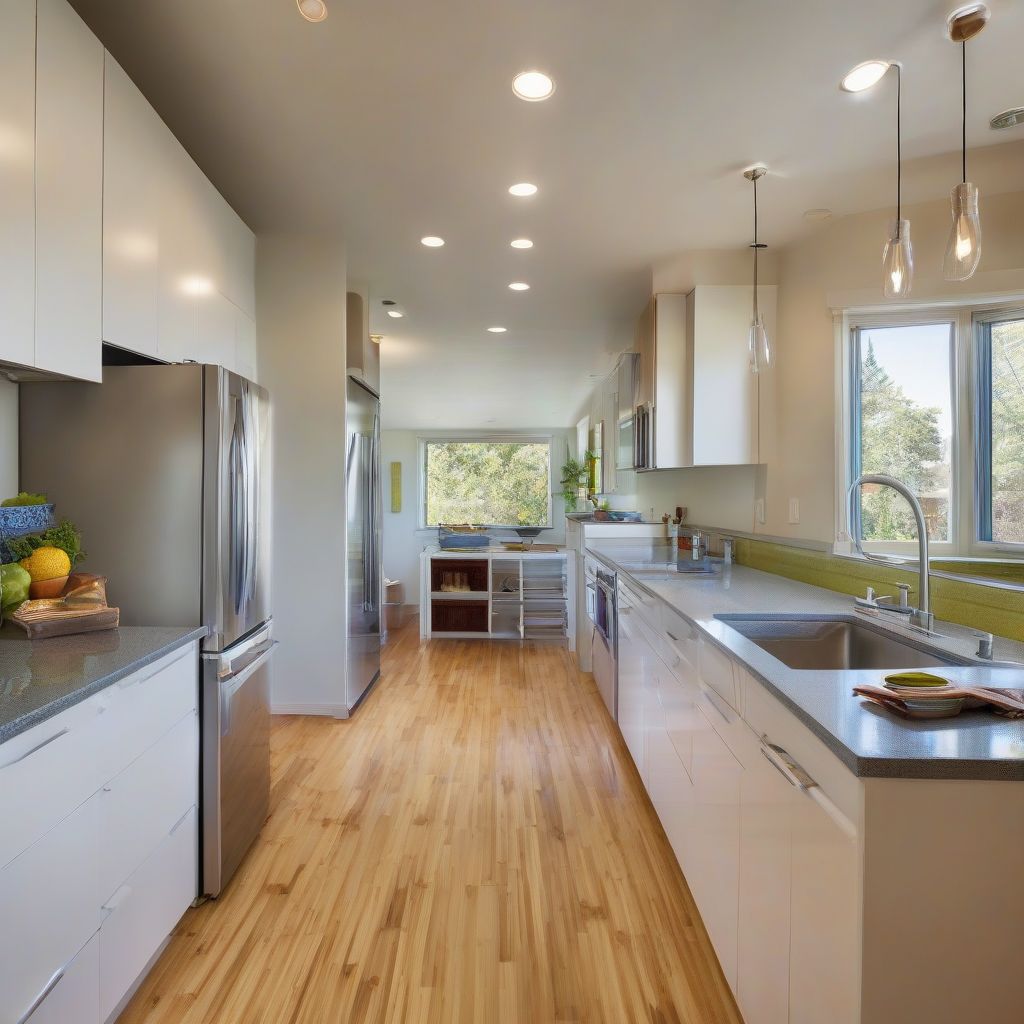Have you ever daydreamed about renovating your home, transforming it into a beautiful, comfortable sanctuary? But alongside the aesthetics, have you considered the impact your choices have on the environment? Using sustainable materials in modern home renovations isn’t just a trend; it’s a responsibility and a smart investment in the future. It allows you to create a stunning space while minimizing your ecological footprint and potentially even saving money in the long run. Let’s explore the significant impact these materials have on your home and the planet.
Why Choose Sustainable Materials?
Sustainable materials are those that are responsibly sourced, have a minimal impact on the environment throughout their lifecycle, and contribute to a healthier indoor environment. This includes everything from the wood in your flooring to the insulation in your walls. Choosing these materials is a key element of green building, a practice that focuses on resource efficiency and minimizing environmental harm.
Environmental Benefits
The environmental benefits of using sustainable materials are numerous. By opting for renewable resources like bamboo or reclaimed wood, you reduce the demand for newly harvested timber, helping to combat deforestation. Choosing materials with recycled content, such as glass countertops made from recycled glass, reduces landfill waste and lowers the energy consumption associated with manufacturing new materials. Sustainable materials also often have lower embodied energy, meaning less energy is used in their production and transportation.
Health Benefits
Beyond the environment, sustainable materials contribute to a healthier indoor environment. Many conventional building materials contain volatile organic compounds (VOCs) that can off-gas into your home, impacting air quality and potentially causing health problems. Sustainable options, such as low-VOC paints and natural fiber insulation, minimize these harmful emissions, creating a cleaner and healthier living space for you and your family.
Economic Benefits
While some sustainable materials might have a higher upfront cost, they often lead to long-term savings. Energy-efficient windows and insulation can significantly reduce your energy bills, and durable materials like bamboo flooring require less frequent replacement, saving you money over time. Furthermore, homes built with sustainable materials can have a higher resale value, as eco-conscious buyers are increasingly prioritizing green features.
Popular Sustainable Materials for Home Renovations
The market for sustainable building materials is constantly evolving, offering an exciting array of options for homeowners. Here are a few popular choices:
Bamboo
Bamboo is a fast-growing, renewable resource that makes an excellent alternative to hardwood flooring. It’s durable, stylish, and readily available.
Reclaimed Wood
Reclaimed wood adds character and history to your home while reducing the demand for newly harvested timber. It can be used for flooring, beams, countertops, and other decorative elements.
Recycled Glass
Recycled glass can be transformed into stunning countertops, tiles, and backsplashes. It’s a beautiful and eco-friendly way to incorporate recycled materials into your design.
Cork
Cork is a natural, renewable material harvested from the bark of cork oak trees. It’s an excellent choice for flooring, insulation, and even wall coverings, offering sound absorption and thermal insulation properties.
Natural Fiber Insulation
Natural fiber insulation, such as sheep’s wool or cellulose insulation (made from recycled paper), offers a sustainable alternative to conventional fiberglass insulation. It provides excellent insulation while being biodegradable and non-toxic.
Implementing Sustainable Practices in Your Renovation
Integrating sustainable materials is just one aspect of eco-friendly renovations. Here are a few additional tips to minimize your environmental impact:
Reduce, Reuse, Recycle
Before demolishing, consider salvaging existing materials for reuse or donation. Recycle construction debris whenever possible to minimize landfill waste.
Choose Local Materials
Sourcing materials locally reduces transportation costs and emissions, supporting local businesses and reducing your project’s carbon footprint.
Work with a Green Builder
Partnering with a contractor experienced in green building practices can help you navigate the complexities of sustainable renovations and ensure your project adheres to eco-friendly principles.
 Sustainable Home Renovation
Sustainable Home Renovation
The Future of Sustainable Renovations
The future of home renovations is undoubtedly intertwined with sustainability. As technology advances and consumer demand for eco-friendly options increases, we can expect to see even more innovative and accessible sustainable materials on the market. Smart home technology is also playing a crucial role, enabling homeowners to monitor and optimize energy consumption, further reducing their environmental impact. Embracing sustainable materials and practices isn’t just a responsible choice; it’s an investment in a healthier, more beautiful, and more sustainable future for our homes and the planet. As renowned architect William McDonough said (paraphrased), “Design should be a celebration of life, not a degradation of it.”
Conclusion
Sustainable materials are transforming the landscape of modern home renovations, offering homeowners the opportunity to create beautiful, healthy, and environmentally responsible spaces. From bamboo flooring to recycled glass countertops, the choices are expanding and becoming increasingly accessible. By embracing these materials and adopting sustainable practices, we can minimize our environmental footprint, improve our indoor air quality, and create homes that are both stunning and sustainable. What steps will you take to make your next renovation project more sustainable? Share your thoughts and ideas in the comments below! We encourage you to explore more resources on sustainable living and home improvement on our website. You can also find valuable information on future trends and smart home upgrades in this article: The Future of Home Renovation Trends and Smart Home Upgrades (https://diyhomeprojectshub.com/the-future-of-home-renovation-trends-and-smart-home-upgrades/). Let’s build a greener future, one renovation at a time.



